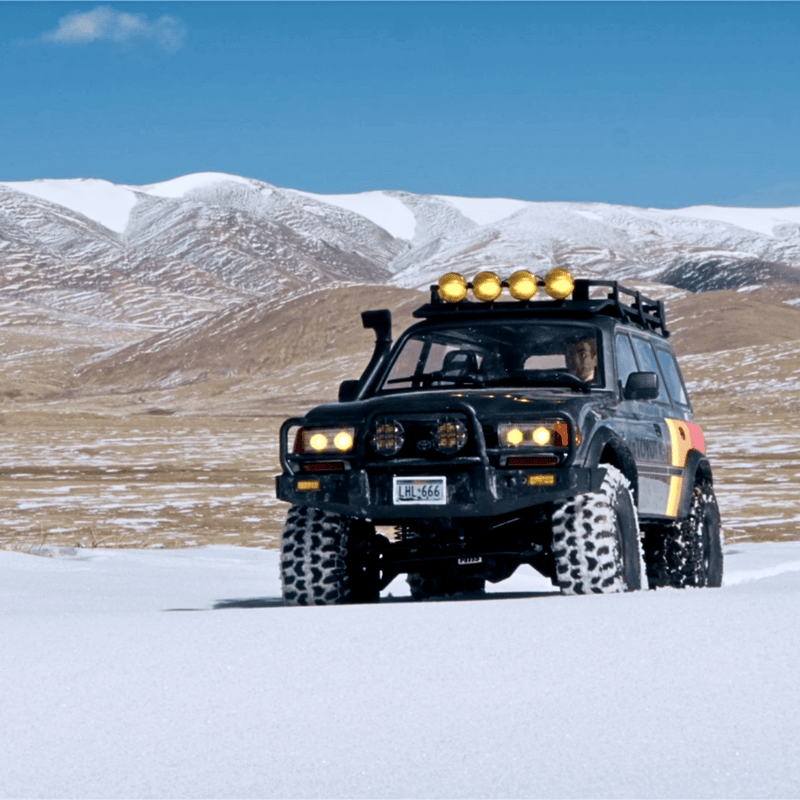Unleash the Thrill: Discover the Secrets of RC Cars and Their Incredible Features!
Remote-controlled (RC) cars have captured the hearts of enthusiasts across all age groups, igniting a passion that blends technology with the thrill of speed and competition. Whether you're a child experiencing your first taste of control or an adult rekindling childhood memories, the allure of RC cars transcends generations. They offer not just a hobby, but a vibrant community filled with shared experiences and camaraderie. With a wide array of types and features available, from nimble on-road racers to rugged off-road vehicles, the world of RC cars is diverse and exhilarating. In this article, we will delve deeper into the different types of RC cars, explore their key features, and understand how they work, providing you with a comprehensive guide to this exciting hobby.

Types of RC Cars
RC cars come in various forms, each designed for specific environments and driving styles. On-road cars are sleek and aerodynamic, built for speed and precision on smooth surfaces like asphalt. They often feature low ground clearance and wide tires for better traction during high-speed turns. In contrast, off-road RC cars are designed to tackle rough terrains, sporting larger wheels, higher ground clearance, and robust suspension systems to absorb shocks from bumps and obstacles. For those who enjoy drifting, specialized drift cars offer rear-wheel drive configurations and slick tires, allowing for controlled slides and spins on paved surfaces. Lastly, rock crawlers provide a unique experience, designed to conquer challenging landscapes with their extreme articulation and grip, making them perfect for navigating rocky paths or steep inclines. Each type of RC car brings its own thrill, catering to different driving preferences and environments.
Key Features of RC Cars
When choosing an RC car, understanding its key features is essential for maximizing performance and enjoyment. Battery life is a crucial factor; it determines how long you can enjoy uninterrupted driving. Most RC cars use rechargeable lithium-ion or nickel-metal hydride batteries, with battery life ranging from 10 minutes to over an hour, depending on the model and usage. Speed is another thrilling aspect; many RC cars can reach impressive velocities, with some racing models exceeding 60 mph. The control range, typically 100 to 300 meters, allows you to maintain a connection with your car, ensuring it remains responsive during your driving sessions. Build quality is also important; durable materials like high-grade plastics or aluminum can significantly enhance a car's longevity, especially in off-road scenarios. Personal experiences shared by friends who've taken their RC cars on rocky trails highlight the importance of sturdy construction—those with reinforced chassis fared much better against rough treatment than their more fragile counterparts. Each of these features plays a pivotal role in shaping your overall experience with RC cars.
How RC Cars Work
Understanding the mechanics behind RC cars can enhance your appreciation for them. At the heart of an RC car is the transmitter, a handheld device that sends signals to the car. This transmitter operates on radio frequencies that communicate with a receiver located inside the car. When you push a button or move a joystick on the transmitter, the receiver interprets these signals and activates the car's motor, steering mechanism, and other functions. The motor powers the wheels, while servos control the steering, allowing for precise maneuvering. Additionally, many modern RC cars come equipped with electronic speed controllers (ESC), which regulate the power supplied to the motor, enabling smoother acceleration and braking. The simplicity of these components belies the complexity of their interactions, and personal anecdotes from friends who have built their own RC cars often reveal the joy of tinkering with these parts to achieve better performance and handling.
Tips for Choosing the Right RC Car
Selecting the perfect RC car can be daunting, especially with so many options available. Start by considering your intended use: do you want to race on smooth tracks or navigate rugged terrains? This decision will guide you toward either on-road or off-road models. Your skill level is also vital; beginners may prefer ready-to-run (RTR) models, while experienced hobbyists might enjoy building their custom cars from kits. Budget is another significant factor; while some models can be quite affordable, high-end options might offer advanced features that justify their price. It's also beneficial to research and engage with the RC community, whether through online forums or local clubs. Many enthusiasts are eager to share their insights and experiences, helping you make an informed decision.
Embrace the World of RC Cars
RC cars offer an exhilarating blend of technology, speed, and community, making them a rewarding hobby for enthusiasts of all ages. Whether you’re racing against friends, conquering challenging terrains, or simply enjoying the thrill of control, there’s something uniquely satisfying about maneuvering your vehicle with precision. The world of RC cars is vast and welcoming, inviting newcomers to explore and discover the joy it brings. So why not take the plunge and join the ranks of RC car enthusiasts? You might just find a fulfilling and exciting new passion!









Comments